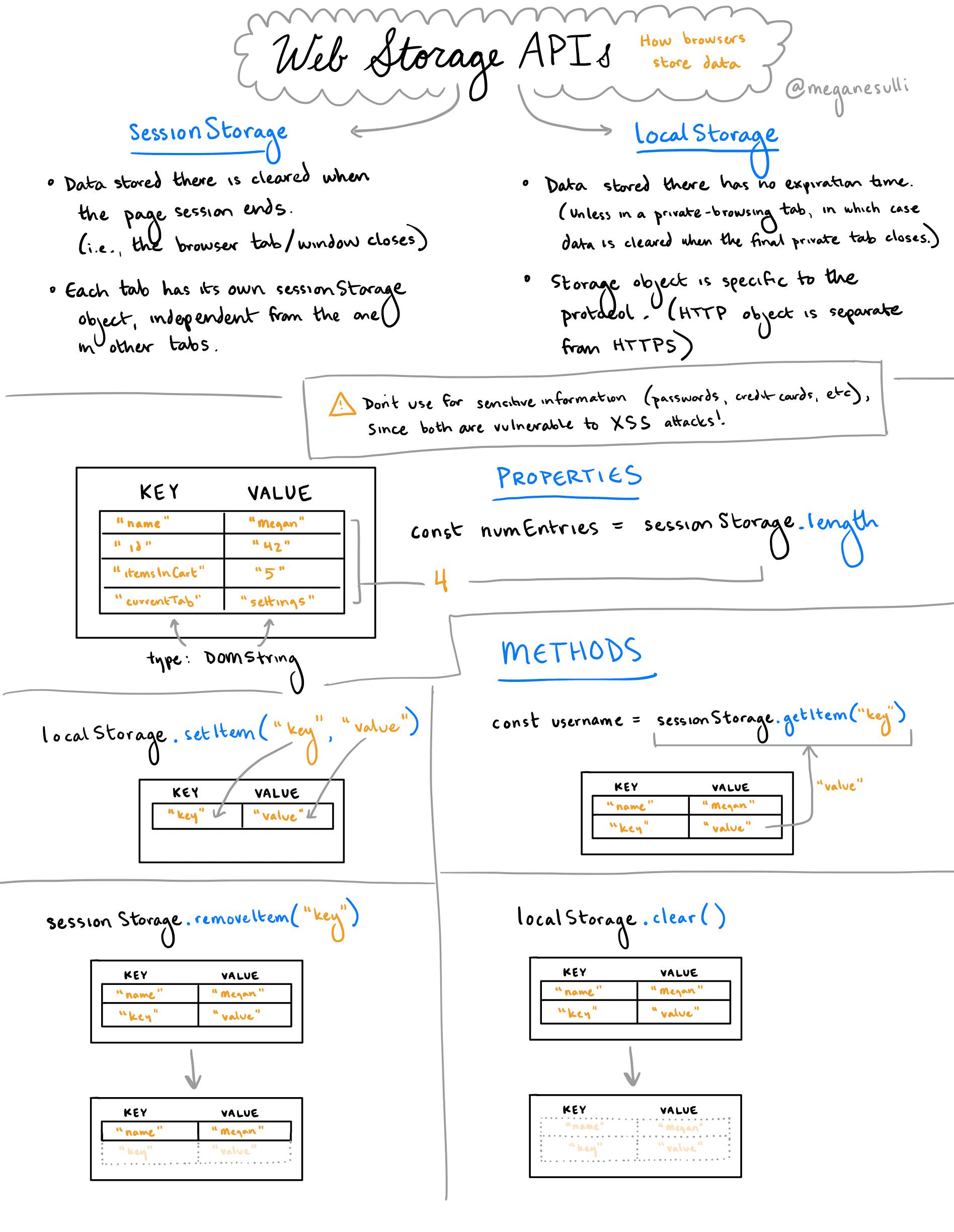
Browsers have two built-in ways to store data: sessionStorage and localStorage.
⚠️ Don't use either for sensitive information (passwords, credit cards, etc.), since both are vulerable to XSS attacks!
sessionStorage
- Data stored there is cleared when the page session ends (i.e., the browser tab/window closes).
- Each tab has its own
sessionStorageobject, independent from the one in other tabs.
localStorage
- Data stored there has no expiration time.
- Exception: If you're in a private tab, then
localStorageis cleared when the last private tab is closed.
- Exception: If you're in a private tab, then
- Storage object is specific to the protocol. (HTTP object is separate from HTTPS.)
Common API
sessionStorage and localStorage both implement the Storage interface.
Both objects contain a key-value store, which is where data is kept. The keys and values are both type DOMString.
Properties
.length- The number of entries in the Storage object's key-value store.const numEntries = sessionStorage.length
Methods
.setItem(key, value)- Adds the key-value pair to the store.localStorage.setItem("key", "value").getItem(key)- Retrieves the value for the specified key. (Returnsnullif the key doesn't exist.)const username = sessionStorage.getItem("key").removeItem(key)- Removes the key-value pair for the specified key. (If the key doesn't exist, nothing happens.)sessionStorage.removeItem("key").clear()- Removes all key-value pairs from the store.localStorage.clear()
![[Sketchnote] Web Storage APIs: How Browsers Store Data](https://cdn.hashnode.com/res/hashnode/image/upload/v1652860370036/IjGk6IlCF.png?w=1600&h=840&fit=fill&fill=blur&auto=compress,format&format=webp)